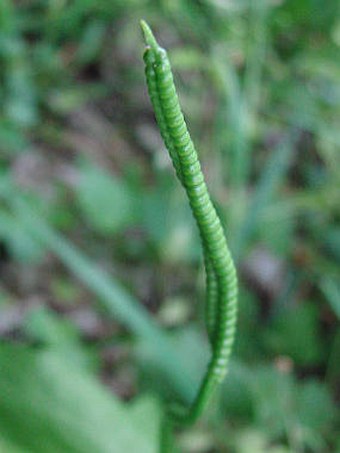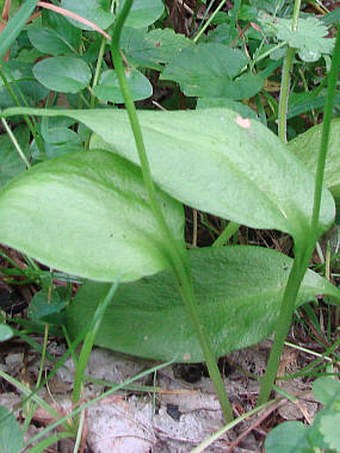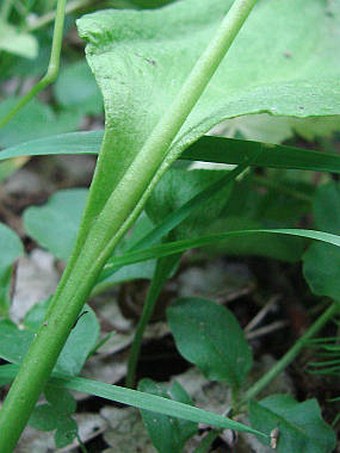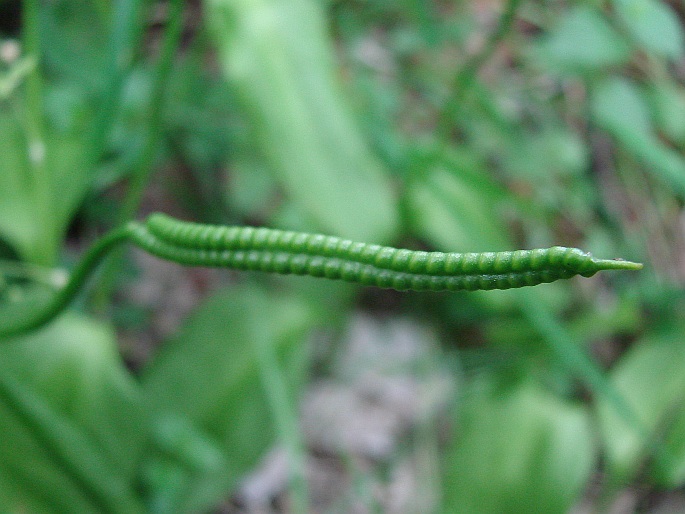Syn.: Ophioglossum unifolium Gilib., Ophioglossum ovatum Salisb.
Family: Ophioglossaceae (R. Br.) C. Agardh

Distribution: Widely distributed species, it occurs almost throughout Europe (except the extreme north), eastern part of USA, Mexican highlands, tropical and southern Africa, Macaronesia, Central Asia, and Far East, north of Patagonia.
Ecology: It grows in damp grassland, moist to wet meadows and pastures, shaded woods, wooded slopes, and floodplain woods.

Description: Fern, 9–14(–23) cm tall. Leaves usually single, rarely in pairs; lamina broadly ovate to ovate-acuminate, 3–15 × 2–6 cm, sessile, with truncate or cordate, rarely cuneate base. Fertile spike with 12–45 sporangia on each side; spores tuberculate.
Threat and protection: It is an endangered and protected species in some European countries (e.g. Czechia, Slovakia, Poland, Hungary). In USA extirpated in Pennsylvania, endangered in New Jersey and Michigan.
Notes: The genus Ophioglossum contains about 25–30 species, which occur nearly worldwide, mainly in tropical and subtropical parts of the world.
The chromosome numbers of Ophioglossum are the highest known in all vascular plants – Ophioglossum vulgatum 2n=480, tropical species Ophioglossum reticulatum even 2n=1440.





These images were taken in Czechia, Bohemia, Lužické hory, Vápenka (June 21, 2008).


